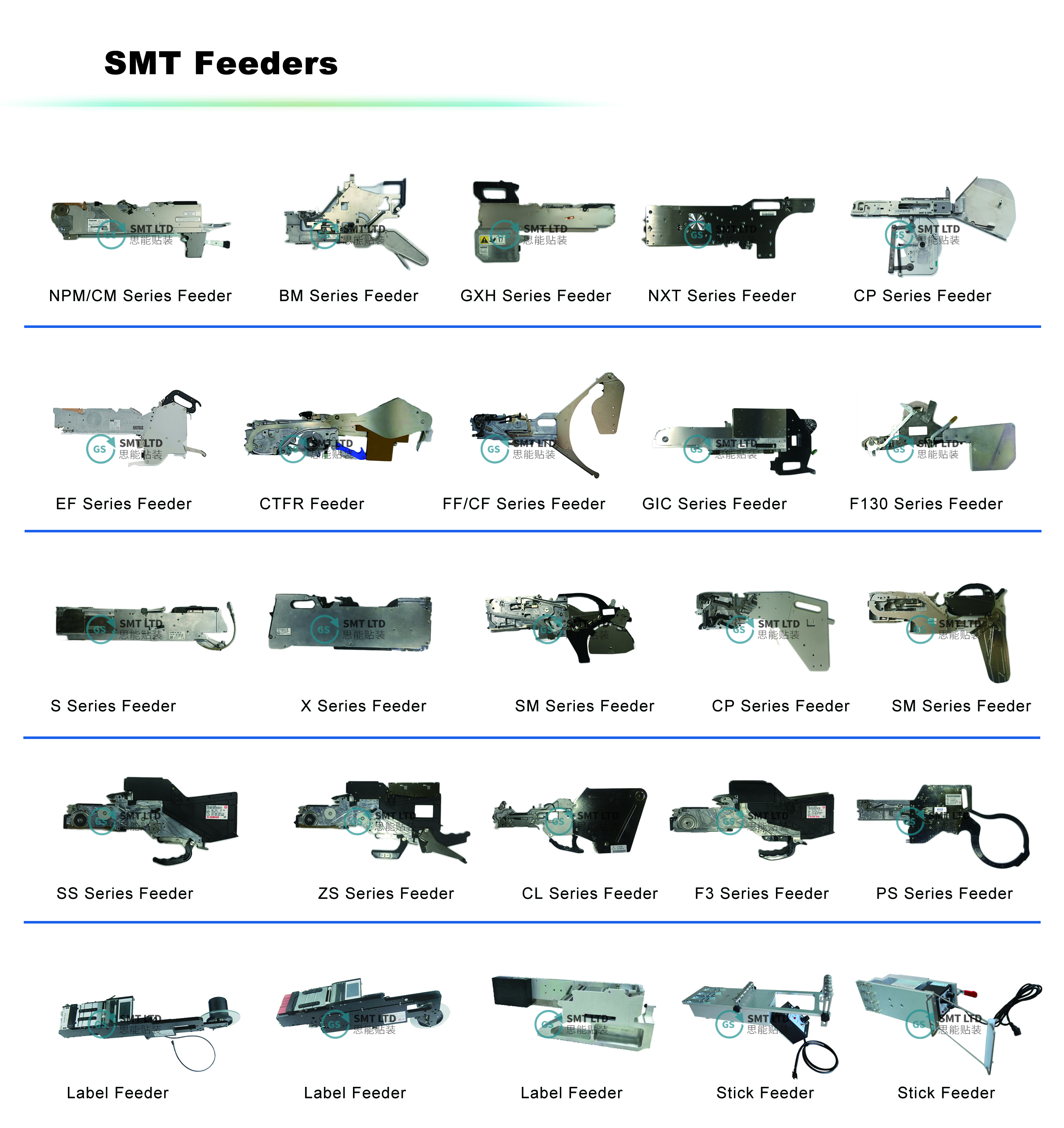
JUKI FTF SERIES TAPE FEEDER 16mm FF16NS E40047060B0 E4004-706-0B0
Brand Name :JUKI
Product name:Feeder
Model Number:FF16NS,E40047060B0,E4004-706-0B0
Condition:original new/compatible new/used original
Lead time:1-3 Days
MOQ : 1 PCS
When sensors used to detect component presence or feeder status in SMT JUKI feeders malfunction, it can lead to errors in component feeding or machine operation. Here's how to solve this issue:
1.Identify Malfunctioning Sensors: Determine which sensors are malfunctioning by reviewing error messages, machine logs, or conducting diagnostic tests. Common sensors in JUKI feeders include component presence sensors, tape end sensors, and cover tape sensors.
2.Inspect Sensor Connections: Check the connections and wiring of the malfunctioning sensors to ensure they are securely connected to the feeder control system. Loose connections or damaged wiring can cause sensor malfunctions.
3.Clean Sensors: Clean the sensor surfaces using a soft, dry cloth to remove any dirt, dust, or debris that may be interfering with sensor operation. Ensure that the sensor lenses are clear and unobstructed for accurate detection.
4.Verify Sensor Alignment: Verify that the sensors are properly aligned with the components or tape within the feeder. Adjust the sensor position if necessary to ensure proper detection and alignment.
5.Test Sensor Operation: Test the operation of the malfunctioning sensors using diagnostic tools or the machine's control interface. Verify that the sensors are detecting components or feeder status accurately during test runs.
6.Calibrate Sensors: If the sensors are not functioning correctly, recalibrate them according to the manufacturer's specifications. Follow the calibration procedures outlined in the machine's user manual or technical documentation.
7.Replace Malfunctioning Sensors: If cleaning, inspection, and calibration do not resolve the sensor malfunction, replace the malfunctioning sensors with new ones. Ensure that the replacement sensors are compatible with the feeder model and properly installed.
8.Update Firmware: Check for firmware updates or software patches for the feeder control system that may address sensor-related issues. Install any available updates according to the manufacturer's instructions.
9.Perform System Diagnostics: Conduct comprehensive diagnostics of the feeder control system to identify any underlying issues or software glitches that may be affecting sensor performance. Address any identified issues promptly to prevent recurrence.
10.Monitor Sensor Performance: Regularly monitor sensor performance during production runs to detect any signs of malfunction or irregularities. Implement preventive maintenance procedures to ensure continued reliability of the sensors.
11.Training and Documentation: Provide training to operators on proper sensor maintenance, troubleshooting, and replacement procedures. Document sensor-related maintenance activities for future reference and consistency.
By following these steps and addressing sensor malfunctions promptly, you can effectively solve problems related to malfunctioning sensors in SMT JUKI feeders, ensuring accurate component feeding and smooth machine operation in the assembly process.
Hot tags:Juki feeder FF16NS,smt Juki feeder FF16NS,Juki tape feeder FF16NS,Juki component feeder E40047060B0,Juki E40047060B0 feeder specifications,Juki E40047060B0 feeder compatibility,Juki E40047060B0 feeder setup,Juki E4004-706-0B0 feeder calibration,Juki E4004-706-0B0 feeder maintenance,Juki E4004-706-0B0 feeder parts,china,wholesale, cheap, low price, manufacturers, factory, suppliers, for sale, in stock















































